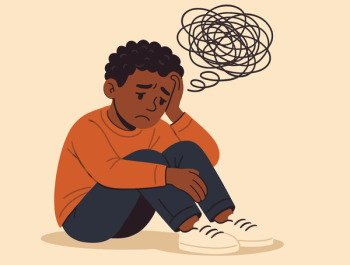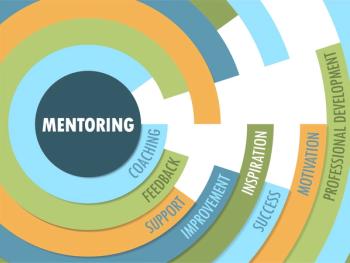
- Vol 32 No 5
- Volume 32
- Issue 5
Lessons From Litigation
In this article, the author covers some basic mapractice concepts and briefly address 2 key issues that frequently arise in the course of psychiatric malpractice litigation: documentation and the defendant psychiatrist’s deposition.
Over their careers, most psychiatrists will have a patient who dies by suicide. Managing suicidal patients’ risk is one of the most stressful endeavors a psychiatrist can face. Such stress is perhaps only superseded by dealing with the aftermath of patient suicide. The intensity of grief experienced by many psychiatrists can be similar to that experienced by those who have lost a family member. After experiencing the grief, shock, and trauma of losing a patient to suicide, there is the possibility of having to cope with a post-suicide lawsuit. Post-suicide lawsuits account for the largest percentage of suits against psychiatrists.1,2
The psychiatrist who is sued after a patient suicide is likely to experience significant emotional stress that waxes and wanes during the lengthy litigation process. The average length of a psychiatric malpractice case, from beginning to end, is approximately 4 years. Some stress may be relieved by knowing what to expect and by being well prepared. This article serves as an introduction to
In this article, I cover some basic mapractice concepts and briefly address 2 key issues that frequently arise in the course of psychiatric malpractice litigation: documentation and the defendant psychiatrist’s deposition.
Psychiatric malpractice
The standard of care in medicine is traditionally defined as “that degree of skill and learning that is ordinarily possessed and exercised by members of that profession in good standing.”3 This standard is also known as the “average practitioner” or “customary practice” standard. Other jurisdictions may apply what is known as the “reasonably prudent practitioner” standard. Standards of care in medicine are generally considered to be nationally applicable, but a minority of jurisdictions may apply a local or regional standard.
The AMA’s 2007/2008 Physician Practice Information Survey reported that 22.2% of psychiatrists had been sued for malpractice at some point in their careers.4 Jena and colleagues5 reported that the probability of psychiatrists facing a claim each year is 2.6%. Despite psychiatrists’ low rate of being sued relative to other medical specialists, we may be at greater risk for sanctions by state medical boards. A comparison of malpractice suits versus medical board discipline from 1990 to 2009 found that while psychiatry accounted for a small percentage of overall malpractice suits, psychiatrists were at an increased risk for medical board disciplinary action compared with other specialties.6
When a psychiatrist is sued for medical negligence, the matter is resolved in civil court. The aggrieved party, or plaintiff, is seeking a monetary award for alleged damages and compensation for pain and suffering. In the case of psychiatric malpractice involving the suicide of a patient, the plaintiff is typically a family member of the deceased. For a plaintiff to prevail in a malpractice case, he or she must prove by a “preponderance of the evidence,” that all 4 of the following elements are present:
• The psychiatrist had a duty of care to the patient
• The psychiatrist deviated from the standard of care
• Which led to damage to the patient
• As a direct result of the deviation from the standard of care
A preponderance of the evidence means “more likely than not,” and can be conceptualized as a 51% or greater probability, although the law does not use such numerical values.
From a legal standpoint, psychiatric malpractice cases often hinge on the issue of foreseeability. Furthermore, the law considers 2 basic types of error when considering the issue of foreseeability and whether the psychiatrist exercised professional judgment: errors of fact and errors of judgment. An error of fact is considered to be a “mistake about a fact that is material to a transaction.”7 For example, an error of fact occurs when the psychiatrist bases a clinical judgment on erroneous beliefs, such as might occur when the psychiatrist fails to review a patient’s history or lab results before making a substantive clinical decision. Psychiatrists are likely to be found negligent for errors of fact.
In contrast, an error of judgment occurs when the psychiatrist makes an informed clinical decision in good faith that turns out to have been a mistake. The psychiatrist is less likely to be held liable for mere error in professional judgment. This is sometimes referred to as judgmental immunity or the error of judgment rule, which states, “A professional is not liable to a client for advice or an opinion given in good faith and with an honest belief the advice was in the client’s best interests, but that was based on a mistake either in judgment or in analyzing an unsettled area of the professional’s business.”8
This principle was underscored in the New York case of Ballek v Aldana-Bernier that involved the release of a patient from the hospital who then committed suicide. The court held that “for a psychiatrist to be held liable for malpractice based upon a decision . . . it must be shown that the treatment decisions represented something less than a professional medical determination . . . or that the psychiatrist’s decisions were not the product of a careful evaluation.”8 It is contemporaneous documentation that gives some of the best evidence that the psychiatrist was diligent in his or her gathering of the facts before exercising clinical judgment.
Psychiatrists’ concerns about medical malpractice claims can affect the way in which they deliver care. Malpractice claims are often viewed by physicians as unwarranted, emotionally painful events that may occur at any time. When a psychiatrist is the target of a malpractice claim, the stress involved may produce intense feelings of shame, anxiety, and depression. Both sued and non-sued physicians experience untoward emotional reactions to the threat of litigation, but sued physicians report significantly more symptoms.9 Considering the unpleasant effects of malpractice litigation on the physician, it is of little surprise when psychiatrists adopt defensive strategies in their clinical practices.10
“Defensive psychiatry” has been defined as any act or omission that is performed not for the benefit of the patient, but to avoid malpractice liability or to provide a legal defense against a malpractice claim. Among hospital psychiatrists, a majority (75%) reported practicing defensively.11 Psychiatrists who have had a patient die by suicide typically become more defensive, more focused on suicide risk, and more likely to suggest hospitalization.12 Despite the understandable tendency to practice defensively, courts do not expect psychiatrists to predict the future, prevent all tragedies, and render continuously flawless care. Rather, there is an expectation that they will use “reasonable professional judgment” based on a consideration of the clinical data. Documentation showing that the psychiatrist performed a reasonable assessment of risk and then provided rationale for implementing a reasonable risk management plan will likely meet the standard of care.
Documentation
The importance of good documentation cannot be overstated. It is the central piece of evidence in every malpractice trial. Good documentation has stopped many malpractice cases from proceeding. In the event of a malpractice suit, one of the first significant steps is for the plaintiff’s attorney to subpoena the patient’s records. The records are screened and reviewed by various parties for merit (ie, to ascertain whether the case should be pursued). It is not uncommon that clear documentation stops a malpractice claim at this early stage. The psychiatrist should document in such a manner that he is fully prepared to have the note be an exhibit in court. Indeed, in the event of a lawsuit, this is precisely what will occur. In many malpractice trials, the notes are enlarged and printed out on poster boards for viewing by the jury.
Should the suit progress to the stage in which a plaintiff’s expert is retained, this represents a second chance for good documentation to halt the suit. In this situation, the objective and ethical plaintiff’s expert may be compelled to inform the plaintiff’s attorney that the documentation substantiates that the standard of care was met and/or that the adverse outcome was not reasonably foreseeable. Even if the plaintiff’s attorney is able to “shop around” for an expert with a favorable opinion, good documentation will likely prevail at the discovery-deposition phase or at trial.
In real-world clinical practice, it is simply not possible to document everything and there must necessarily be limits to the amount of documentation. Nevertheless, strive to document important clinical matters contemporaneously. When psychiatrists do not document their reasoning, there will be no evidence to show that they were thoughtful, prudent, and used reasonable professional judgment. This is the very evidence needed by the psychiatrist’s defense attorney to defend against a malpractice claim.
When noting an action taken in furtherance of a risk management plan (eg, committing or not committing an individual, increased frequency of appointments), it is essential to include a statement, however brief, of the rationale for the action. For example, document that you have considered the option of civil commitment and the clinical basis for rejecting or proceeding with that option. Whenever the clinical situation requires the involvement of family members, you should strongly consider documenting instructions and information given to both the patient and the family. Consider noting whether they agree with the treatment decisions, as well as noncompliance with treatment recommendations. Unrecorded instructions or conversations with family members will likely become points of contention after a suit is filed.
In the event of a malpractice suit, it is virtually always the case that some documentation is better than none. Indeed, it is a myth that psychiatrists’ liability is reduced by not having any documentation. Without any documentation, it is extremely easy for the plaintiff’s attorney to make a number of harmful insinuations, including the familiar “If it wasn’t documented, it wasn’t done.” The good news is that lack of documentation can sometimes be overcome by the psychiatrist and defense attorney at deposition, by bringing out how certain facts were elicited or considered but simply not documented. However, it is always best to not be in such a position in the first place by documenting key data as well as actions taken and the clinical justification for taking them.
The deposition
The defendant psychiatrist’s deposition is of crucial importance and could mean the difference between the suit being dismissed or proceeding to trial. If a psychiatric malpractice case settles in favor of the plaintiff before going to trial, the effectiveness of the defendant psychiatrist in the deposition may determine whether the case is settled for $300,000 or $1 million. Approximately 90% of malpractice cases settle before trial, and the deposition of the defendant is the turning point that determines the outcome of the case.13-15
A deposition is a “statement of a witness under oath, taken in question and answer form as it would be in court, with opportunity given to the adversary to be present and cross-examine.”16 The discovery deposition is designed to gather information before trial, clarify details, and “lock down” a witness’s testimony. Should the case go to trial and the defendant psychiatrist’s testimony differ from his deposition testimony, he is likely to be vigorously attacked on cross-examination to disastrous effect. The defendant psychiatrist’s style and approach to deposition testimony typically differs greatly from testimony at trial. Thus, preparation with your defense attorney is absolutely crucial.
According to the Federal Rules of Civil Procedure, depositions are generally limited to “1 day of 7 hours.”17 Unusual or special circumstances may result in a deposition continuing more than 1 day. However, the typical duration of a deposition is approximately half a day. The psychiatrist should plan accordingly and allow for sufficient scheduling flexibility.
In preparing for a deposition, you, the defendant psychiatrist, should insist on predeposition conferences with defense counsel. Carefully review the entire database, which will usually consist of the medical records and other discovery depositions. At a later predeposition conference, defense counsel may help you by conducting a “mock” deposition that involves difficult or anticipated questions. This is a good opportunity to master some of the anxiety surrounding the deposition and to improve your effectiveness as a witness. You may wish to go over your curriculum vitae with defense counsel and check it for mistakes or other areas that may attract problematic deposition questions.
Conclusions
The emotional effect of patient suicide on the psychiatrist can be devastating and deserves substantially more dialogue and study. In addition, it is clear that a post-suicide lawsuit has a number of highly negative consequences for the psychiatrist. The situation amounts to a demoralizing one-two punch of grief and guilt, followed by a lengthy period of stress, anxiety, and self-doubt. Dr Malhotra’s moving narrative contains all of the above, but also some valuable and helpful learning points.
Dr Malhotra discovered that knowledge and preparation are the keys to reducing some of the stress and increasing the likelihood of successfully defending against a malpractice case. To his credit, he also emphasizes the important role that self-care can play as the litigation process unfolds. Concerns about who to talk to privately about the trauma of the patient suicide and subsequent litigation are common. Some psychiatry departments or institutions may have various options or retreat models for accomplishing this.18
However, many psychiatrists will need the safety and expertise that a private therapist offers to help abreact and process difficult emotions. This may be a very useful option and one that provides the psychiatrist with a sense of security that the therapy is beyond the reach of attorneys and the malpractice legal proceedings. Dr Malhotra’s anatomy of a psychiatric malpractice case contains lessons for us all and serves as a stark reminder of the incredibly challenging and important work psychiatrists do.
References:
1. Packman WL, Pennuto TO, Bongar B, Orthwein J. Legal issues of professional negligence in suicide cases. Behav Sci Law. 2004;22:697-713.
2. Baerger DR. Risk management with the suicidal patient: lessons from case law. Prof Psychol Res Pract. 2001;32:359-366.
3. Slovenko R. Psychiatry in Law, Law in Psychiatry. New York: Brunner-Routledge; 2002.
4. American Medical Association. AMA 2007/2008 Physician Practice Information Survey.
5. Jena AB, Seabury S, Lakdawalla D, Chandra A. Malpractice risk according to physician specialty. N Engl J Med. 2011;365:629-636.
6. Reich J, Schatzberg A. An empirical data comparison of regulatory agency and malpractice legal problems for psychiatrists. Ann Clin Psychiatry. 2014;26:91-96.
7. Black H. Black’s Law Dictionary. 8th ed. St Paul: West Publishing Co; 2004.
8.Ballek v Aldana-Bernier, 94 AD3d 923, NY Slip Op 02823 (2d Dept 2012).
9. Charles SC, Wilbert JR, Franke KJ. Sued and nonsued physicians’ self-reported reactions to malpractice litigation. Am J Psychiatry. 1985;142:437-440.
10. Nys TR, Nys MG. Psychiatry under pressure: reflections on psychiatry’s drift towards a reductionist biomedical conception of mental illness. Med Health Care Philos. 2006;9:107-115.
11. Passmore K, Leung WC. Defensive practice among psychiatrists: a questionnaire survey. Postgrad Med J. 2002;78:671-673.
12. Greenberg D, Shefler G. Patient suicide. Isr J Psychiatry Relat Sci. 2014;51:193-198.
13. Babitsky S, Mangraviti JJ. How to Become a Dangerous Expert Witness: Advanced Techniques and Strategies. Falmouth, MA: SEAK, Inc; 2005.
14. Clark AD, Fox PJ. The defendant physician’s deposition: fighting back-at last! Mo Med. 2002; 99:524-525.
15. Rice B. Malpractice: how to survive a deposition. Med Econ. 2005;82:45-48.
16. Gifis S. Law Dictionary. 4th ed. New York: Barron’s Educational Series, Inc; 1996.
17. Legal Information Institute. Federal Rules of Civil Procedures. Rule 30: Depositions by Oral Examination.
18. Figueroa S, Dalack GW. Exploring the impact of suicide on clinicians: a multidisciplinary retreat model. J Psychiatr Pract. 2013;19:72-77.
Articles in this issue
over 10 years ago
Psychiatric Care of Patients With Hepatitis C: A Clinical Updateover 10 years ago
Defending a Malpractice Suit: Lessons Learnedover 10 years ago
Correcting Psychiatry’s False Assumptions and Implementing Parityover 10 years ago
Psychiatric Times Welcomes New Editorial Board Members!over 10 years ago
Suicide in College Students: A Call to ActionNewsletter
Receive trusted psychiatric news, expert analysis, and clinical insights — subscribe today to support your practice and your patients.














